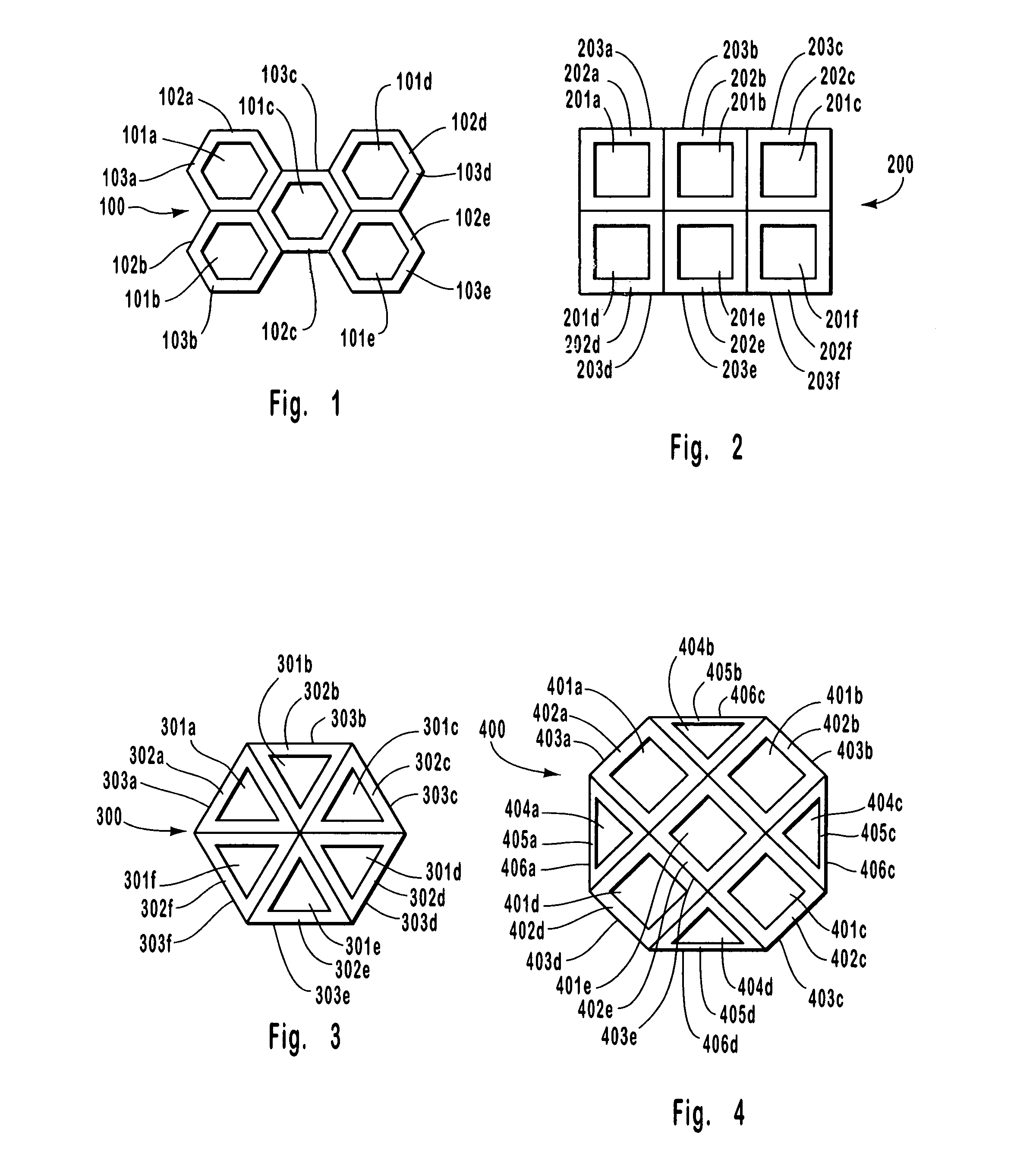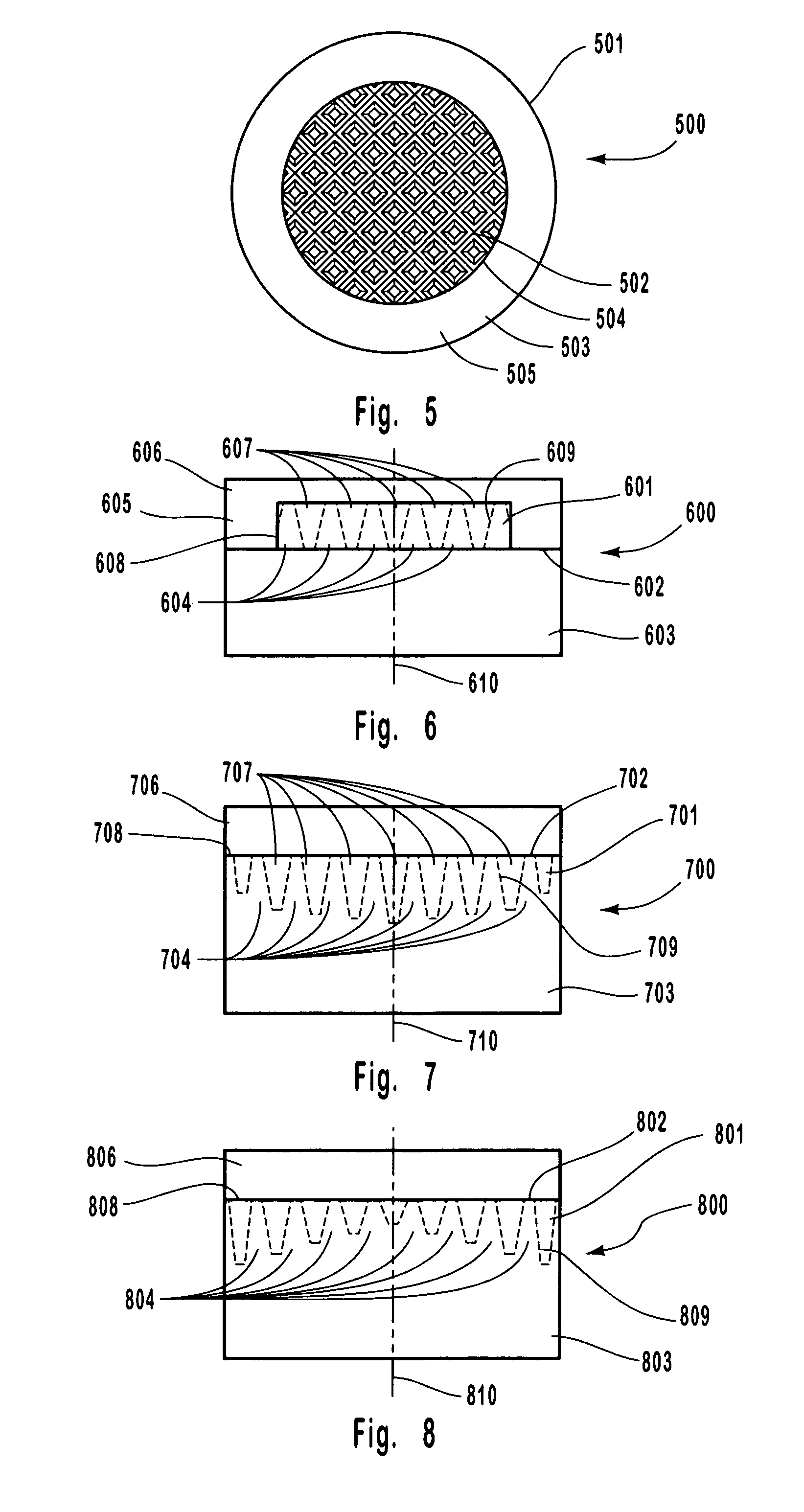PDC interface incorporating a closed network of features
- Summary
- Abstract
- Description
- Claims
- Application Information
AI Technical Summary
Benefits of technology
Problems solved by technology
Method used
Image
Examples
Embodiment Construction
[0028]This invention is intended primarily for use as the cutting structure on earth boring devices used in oil and gas exploration, drilling, mining, excavating and the like. The mechanical and thermal properties of polycrystalline diamond make it an ideal material for cutting tools. However, like most hard materials, diamond is brittle and relatively weak under tensile loading. This is why it is so beneficial to make PDC designs that can manage the residual stresses associated with the large thermal expansion mismatch between the diamond layer and the substrate. Designs that minimize tensile stresses and maximize the compressive stresses in diamond are particularly desirable. The presence or absence of either of these residual stresses is a major determinant for significantly improving or weakening the working strength of the PDC. This invention by providing the benefits of increased attachment strength and a plurality of cutting edges is advantageous because it manipulates the re...
PUM
| Property | Measurement | Unit |
|---|---|---|
| Thickness | aaaaa | aaaaa |
| Strength | aaaaa | aaaaa |
| Residual stress | aaaaa | aaaaa |
Abstract
Description
Claims
Application Information
 Login to View More
Login to View More - R&D
- Intellectual Property
- Life Sciences
- Materials
- Tech Scout
- Unparalleled Data Quality
- Higher Quality Content
- 60% Fewer Hallucinations
Browse by: Latest US Patents, China's latest patents, Technical Efficacy Thesaurus, Application Domain, Technology Topic, Popular Technical Reports.
© 2025 PatSnap. All rights reserved.Legal|Privacy policy|Modern Slavery Act Transparency Statement|Sitemap|About US| Contact US: help@patsnap.com



